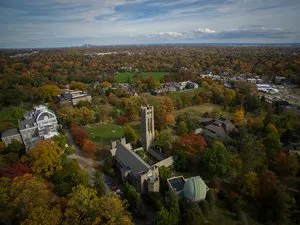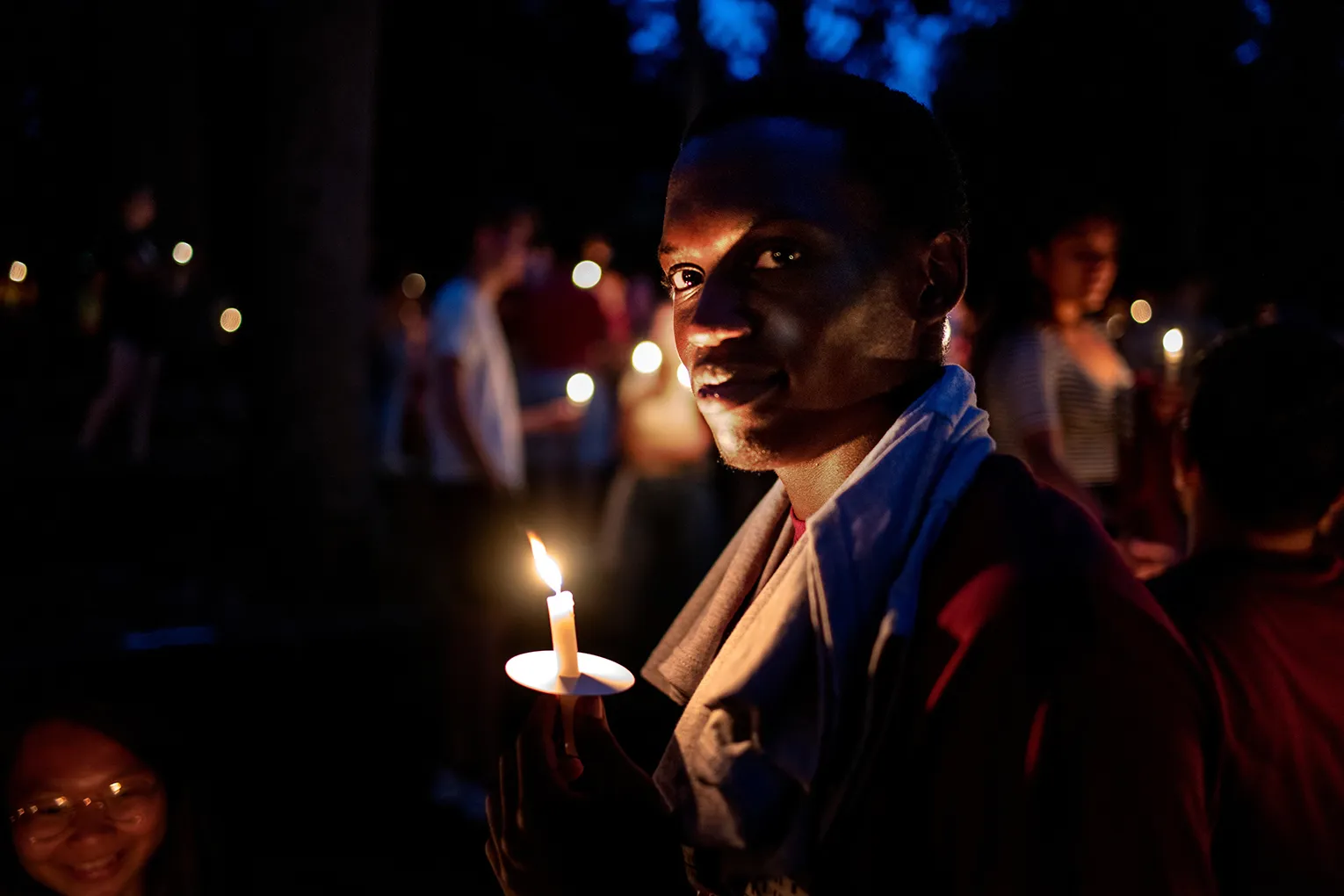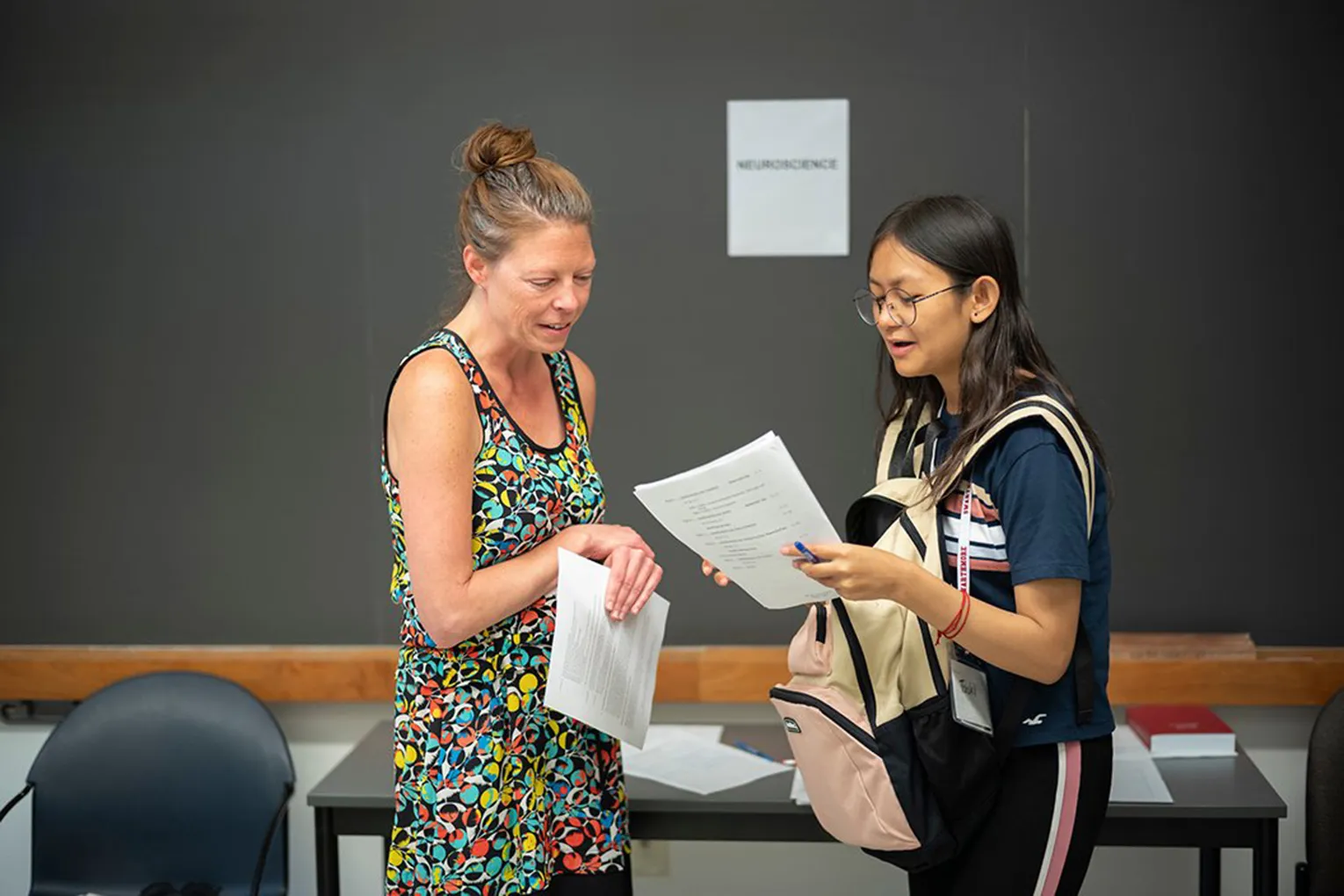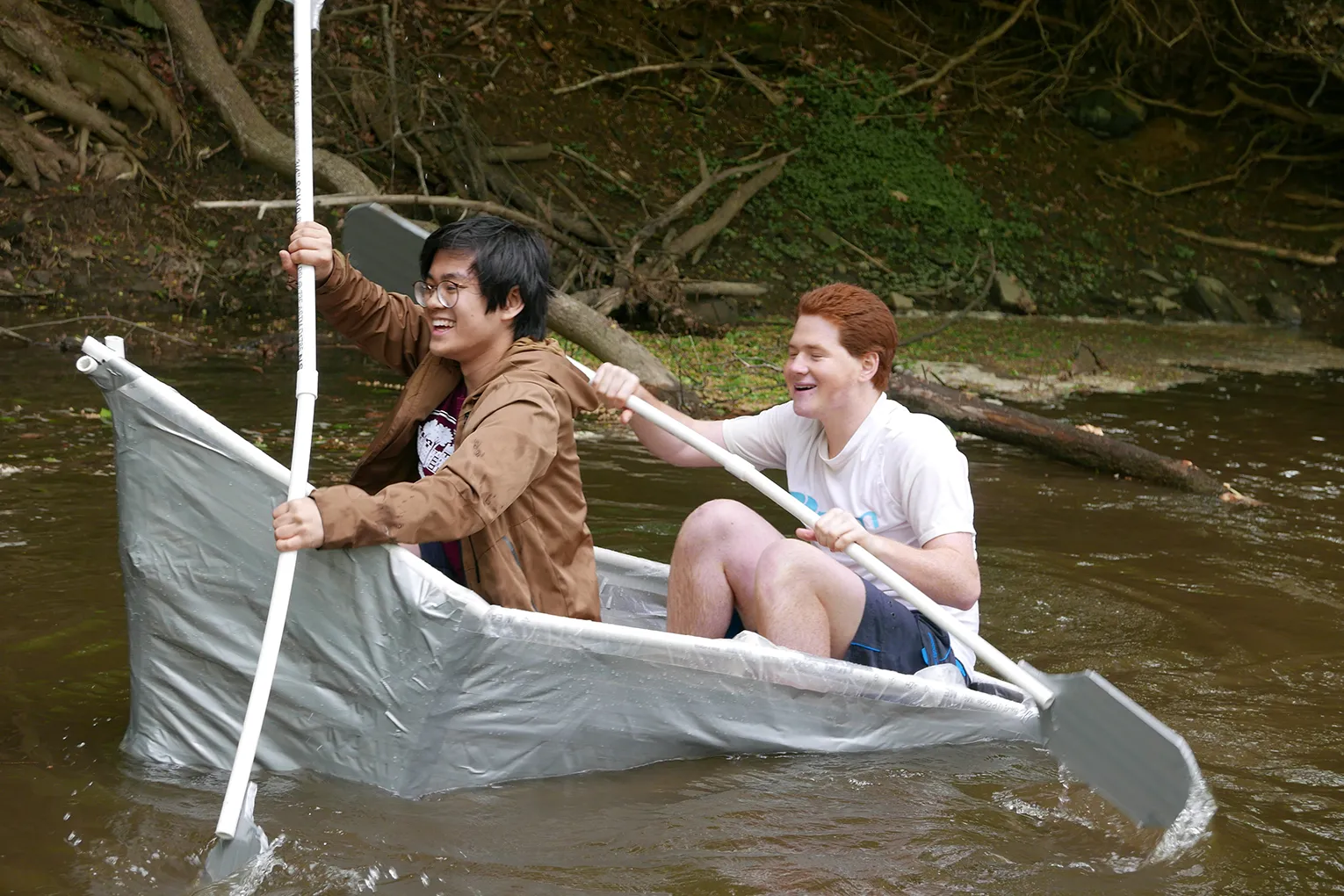In Honor of Professor Emerita of Biology Barbara Yost Stewart ’54
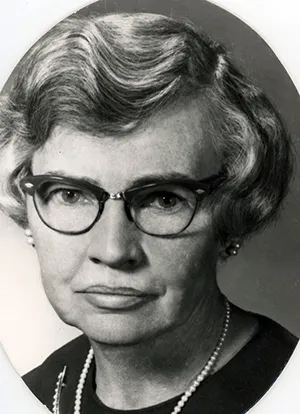
President Valerie Smith shared the following message with the campus community on January 15, 2025:
Dear Friends,
With deep sadness, I write to share the news that Professor Emerita of Biology Barbara Ruth Yost Stewart ’54 died peacefully at her residence in Lansdale, Pa., on Tuesday, Dec. 10. She was 92.
Barbara, who taught and mentored both students and colleagues in Biology for nearly 30 years, is remembered as a dedicated, resourceful educator who placed as much value on fun and kindness as she did on hard, careful work. Her legacy also extends to the legions of alumni, including non-biology majors, who attended medical school thanks in large part to her guidance as the College’s first health science advisor.
Barbara is survived by her first husband, Robert Stewart ’53; sons Russell (Anne) and Douglas (Liz); three grandchildren; and five great-grandchildren. Robert Chase, her husband of 27 years, died in 2018.
A memorial service took place earlier this month. Condolences may be left here, and in lieu of flowers, the family welcomes contributions to the Brittany Pointe Estates Samaritan Fund at ACTS Legacy Foundation.
I invite you to read more below about Barbara and her many contributions to our community.
Sincerely,
Val Smith
President
In Honor of Professor Emerita of Biology Barbara Yost Stewart ’54
Professor Emerita of Biology Barbara Ruth Yost Stewart ’54 died Tuesday, Dec. 10, at age 92. With her passing, the Swarthmore community has lost an admired teacher and generous mentor who also served countless students as the College’s first health science advisor.
“Barbara was a person who combined resourcefulness and compassion,” says Scott Gilbert, Howard A. Schneiderman Professor Emeritus of Biology. “Her ability to listen, think through a problem, and find equitable solutions helped make the Biology Department such a great place for students, faculty, and staff. As the long-term associate department chair, she gave wise counsel to many successive chairs, including me. She was sorely missed as soon as she left Swarthmore.”
“Barbara balanced wisdom with humor and gravitas with a fondness for spirited fun,” says Rachel Merz, Walter Kemp Professor Emerita in the Natural Sciences. “She understood the perspectives of different constituents of our community in a profound way, and she used that knowledge to make sure the doorway was opened for all, especially for other women.”
“Barbara was very capable, responsible, extremely friendly, and the reliable source of institutional knowledge for the department,” says Amy Vollmer, Isaac H. Clothier Jr. Professor Emerita of Biology. “I don’t think we truly realized how much she did until she told us she was going to retire.”
Stewart was born in 1932 in Johnstown, Pa., the youngest of three, and grew up in nearby Westmont. Her arguably atypical interests for a young girl — playing basketball, collecting model trains and building model airplanes, creating games and puzzles — perhaps foreshadowed how she would devise her career.

Stewart's entry in the 1954 Halcyon reads: "impish ways conceal serious intent ... Johnstown tribune ... spirited shortstop ... practical joker ... proud owner of the brightest red curtains on campus ... what are those psych people doing in Martin? ... rides typewriter tables ... don't answer it, it's the Phoenix ... originator of unofficial fire drills ... zoo major headed for journalism ... barb, barbie."
As a Swarthmore student, Stewart played shortstop for the softball team, wrote for The Phoenix, and was known as a practical joker who enjoyed “unofficial” fire drills. The Halcyon also noted that she was the “proud owner of the brightest red curtains on campus,” and that her “impish ways conceal[ed] serious intent.”
After Stewart graduated from Swarthmore with a B.A. in zoology, she married Robert Stewart ’53, a fellow zoology major, and devoted the next several years to her family. In 1968, Stewart returned to her alma mater in the relatively new position of biology lab assistant.
In that role, Stewart made solutions and warmed up and calibrated equipment, among other tasks. She also decided to continue her education at Bryn Mawr College, where she earned an M.A. and Ph.D. in biochemistry, by studying the effect of temperature on fatty acids and lipids in the microorganism Tetrahymena, with a special interest in cell membrane structure and function.
With her new credentials, Stewart sought a teaching position and was named a lecturer in 1976. She co-taught the laboratories in Robert Savage's Cell Biology course, as well as an advanced seminar in Membrane Biology. Stewart also maintained chief responsibility for organizing all of the department’s laboratories, published articles on laboratory curriculum, presented workshops on writing in the sciences, and won teaching and course development awards.
As Stewart once recounted in a science education journal, she was hired to change Swarthmore’s laboratories from demonstrative labs to investigative labs, “and, of course, to do it as inexpensively as possible.” In time, she and her colleagues designed a series of labs that allowed students to design their own experiments within the confines of selected instruments and available materials. As a result, students learned that the more time they spent organizing the experiment, the less actual time they needed to spend in the laboratory.
“We applaud this efficiency,” Stewart said. “Most of all, the student learns that designing experiments is challenging and fun and that the results are often entirely unpredictable. These surprises are the elements that differentiate investigative labs from demonstrative labs, for these surprises require a new mental approach to the problem and teach students to think on their feet.”
Stewart’s appointment was as a part-time, not tenure-track, faculty member and part-time academic coordinator, including after her 1985 promotion to associate professor. Despite, and maybe because of, her nontraditional path to the faculty and her other roles in the department, she ultimately — and deliberately — became indispensable.
“In addition to lecturing in Intro Bio, Barbara had a huge advising load,” Vollmer recalls from when she joined the department in 1989. “It turned out Barbara kept track of all the requirements for students in the department. This was not just analog but the dark ages, back when the registrar scheduled classes and recorded grades but the responsibility for keeping track of requirements was largely up to departments.”
“Barbara had so many advisees that she needed to make the meetings with them more efficient,” Merz says. “Her technique? She wouldn't let them take their coats off and get too comfortable in her office.”
“Barbara saw things no one was doing,” Vollmer adds, “so she expanded her files to keep track of everybody, including Tri-Co students, and things like study abroad credits, before there was an internet. She certified every major, and was so good at it.”
Stewart also saw the need for a more deliberate and coordinated effort devoted to advising students on their medical, dental, and veterinary school applications. In 1984, she took on the role of health science advisor.
“Barbara brought high standards and a genuine concern for students as their advisor,” says Gigi Simeone, who succeeded Stewart in the role. “I am gobsmacked that she and Bonnie Harvey ’54, her classmate and assistant, did it all with a typewriter and paper files, and without any of the technology we rely on today. And somehow, she managed to juggle all that with her work as a member of the Biology faculty. Her commitment to the College and its students was at the highest level.”
“There are hundreds of physicians in the world today that achieved their entry to medical school,” Merz says, “not only by virtue of their own academic prowess, but because of her good advice, persistence, and well-maintained connections to the admissions offices of many medical schools.”
Vollmer says Stewart showed her, when she was a new faculty member, that recommendation letters were key, especially when it came to medical school applications. “Anyone can look up GPAs,” Vollmer says. “You have to tell a story and give reviewers a way to distinguish a student from other applicants.”
Stewart retired in 1996 with the rank of full professor, after which a number of things changed in the department.
“Once Barbara left, everybody clutched their pearls because we realized that she was both a clearinghouse and repository for all kinds of information about graduation requirements, as well as credits earned in classes taken elsewhere,” Vollmer says. “We had so many Biology majors, no one could take them all on. Advising is now distributed among all tenure-track faculty, and we had a steep learning curve to do it.”
“Barbara was Biology’s organizational nerve center,” says Kathy Siwicki, Howard A. Schneiderman Professor Emerita of Biology. “I began my first term as department chair shortly after Barbara retired, and I was utterly terrified at the prospect of managing the department without her. She was truly irreplaceable.”
In 1991, Stewart married Robert Chase, a biology professor at Lafayette College. Active in retirement, they enjoyed many adventures, including learning together how to construct a full-size airplane. Chase, a licensed pilot, flew the Zenair 701 aircraft in their rented hangar in Winterhaven, Fla.

Barbara Yost Stewart '54 in retirement
When the couple moved to Brittany Pointe Estates (BPE) in Lansdale, Pa., they characteristically became deeply involved in the community. Stewart revamped and edited the BPE newsletter, taught fellow residents how to use their iPads, and became known for the competitive scavenger hunts she created. In 2017, Stewart and her husband received the BPE Residents of the Year Award.
“Though we were not in touch for the last decades of her life, I am not at all surprised that Barbara spent those years fruitfully, organizing events for her friends and bringing good cheer to others as she always did for us,” says Mark Jacobs, who served on Swarthmore’s Biology faculty for 28 years before becoming dean of Arizona State University’s honors college in 2003. “She was, in my experience, always a funny, positive person, and I can still hear her gleeful chortle as she played one practical joke or another on one of us.”
“Barbara was dedicated to Swat and certainly made all of us in the Biology Department feel at home,” says retired Colorado State professor Gregory Florant, who taught biology at Swarthmore in the 1980s. “And, I should add, she was second to none at pulling pranks on [Scott] Gilbert!”
Perhaps Stewart’s most infamous prank occurred when she faxed a convincing, yet phony, Phoenix to Gilbert’s lab in Finland, where he was on sabbatical, stating he had been elected Swarthmore’s new president. The College was in the midst of a presidential search at the time.
“News got around,” Gilbert says. “I had to stop them from planning a party in my honor.”
Vollmer still appreciates the humor she frequently experienced with Stewart, Savage, and other former members of the department. “These are people who were serious about their work, but who didn’t take themselves seriously,” Vollmer says. “Working with such wonderful mentors is a lovely way to start your career.”
Of her early days at Swarthmore, Vollmer adds: “Barbara would stick her head in my office and say, ‘Head still above water? If not, I can give you a reed so you can breathe.’”
